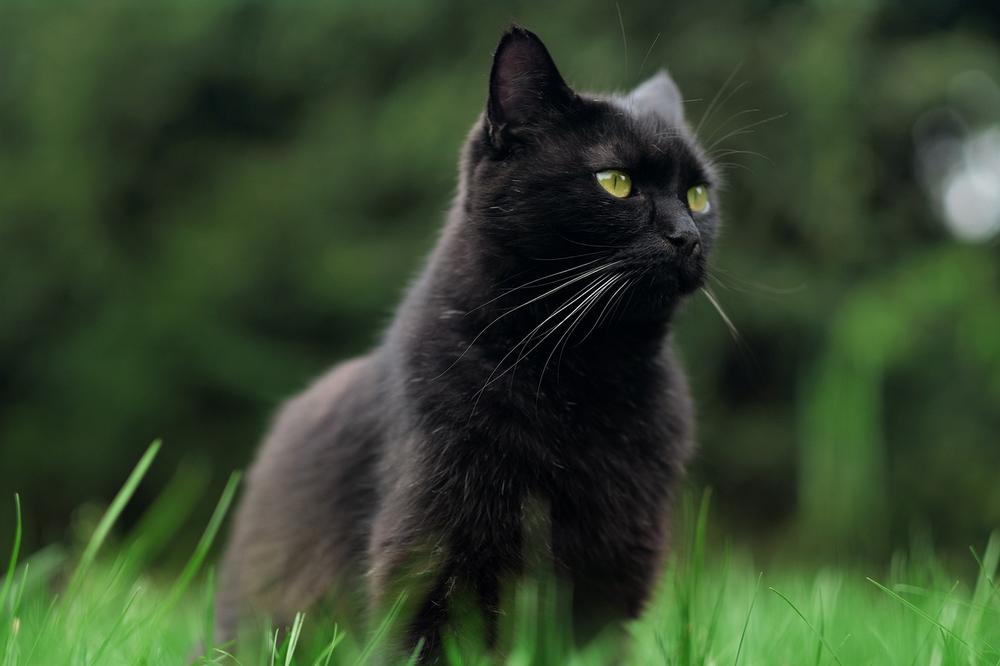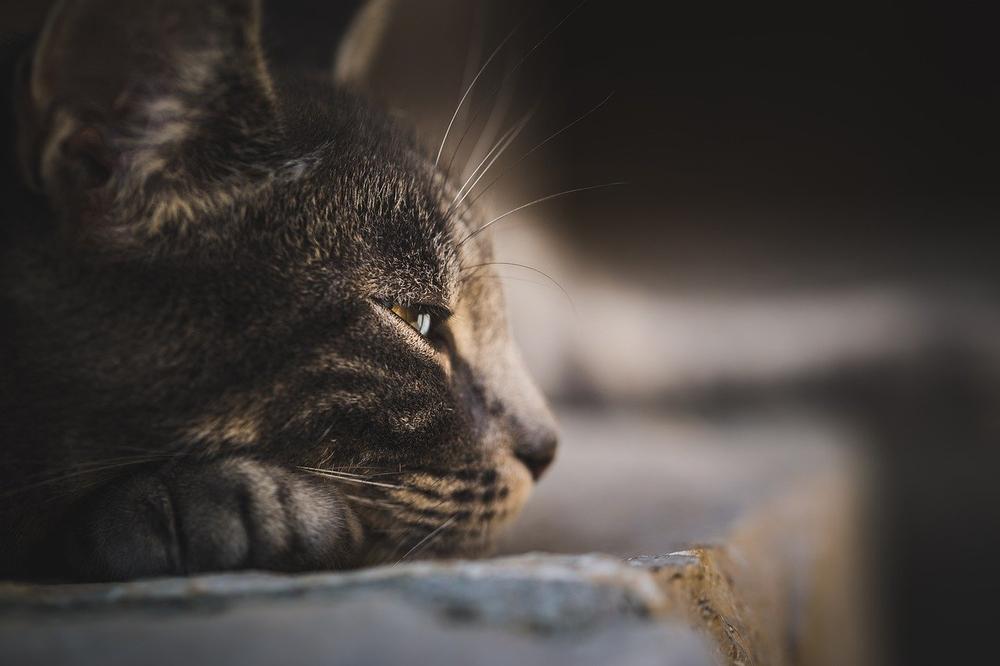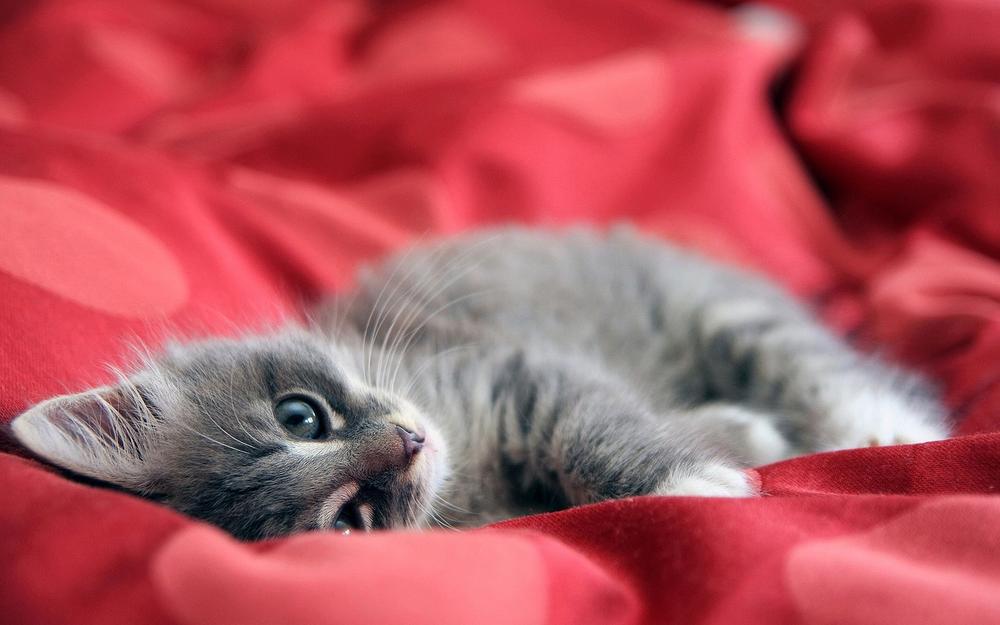Do Cats SHED More in the SUMMER? Is It Actually Normal?

So, your beloved furball is shedding like crazy, huh?
I feel you, my friend. 😉
It's like living in a never-ending blizzard of cat hair.
And let's be real, nobody wants to constantly be sporting a coat of Fluffy's finest fluff.
But here's the thing, champ:
Is it normal for cats to shed more in the summer?
Well, worry not, because we're about to unravel the mysteries of Feline Fur Fest.
Ready to dive in?
Let's get this shedding show on the road!
Is It Normal for Cats to Shed More in Summer?
Yes, it is normal for cats to shed more in the summer due to warmer weather and longer daylight hours. Shedding helps cats adapt to changing conditions and maintain healthy coats. However, excessive shedding throughout the year could indicate underlying health issues or allergies, so you need to consult a vet.
Cats shed more in the summer. No surprise there, right?
Warmer weather and longer daylight hours trigger cats to shed more as part of a natural response.
It’s their way of adapting to changing conditions.
But here's the thing...
Too much shedding all year round could be a sign of something more than just warm weather.
Hold this thought for a minute.
Excessive shedding throughout the year can indicate allergies or other health problems that your furry friend may be dealing with.

So, if you notice an excessive amount of shedded fur, your best bet is to consult a vet.
But hey, don't fret!
Shedding is entirely normal for cats.
They've been practicing it for millions of years... Shedding helps them get rid of dead fur, grow new fur, and keep their coats in tip-top condition—all signs of excellent all in all health.
Nevertheless, during summer, you may find yourself spending more time sweeping up loose fur from your floors and brushing it off your furniture.
Just ensure to give your kitty plenty of love and pets while you're at it!
But have you ever wondered why cats shed more in the summer?
Well, it turns out that shedding in cats is directly influenced by the amount of daylight they are exposed to.
So let's explore how the changing lengths of daylight throughout the year impact your furry friend's shedding patterns and what factors contribute to the variations in their summer and winter coats:
What Months Do Cats Shed the Most?

When it comes to shedding, cats have their own schedule:
- Cats shed more during the spring and fall months due to the changing daylight.
- The amount of shedding is influenced by sunlight and a cat's exposure to it.
- Indoor lighting can also affect shedding in cats with an undercoat.
- Factors such as breed, climate, and fur length contribute to the variation between a cat's summer and winter coats.
- Cats that spend more time outdoors will shed more in spring, when daylight hours are increasing.
- Sunlight plays a role in regulating a cat's shedding cycle.
- Shedding can be more pronounced in cats with long or thick fur.
- Regular grooming can help manage shedding by removing loose fur.
- You can provide your cat with a balanced diet to maintain healthy skin and coat, which may help reduce excessive shedding.
- If you notice excessive shedding or changes in your cat's coat, it's always best to consult a veterinarian for guidance.
So, the next time you find cat hair everywhere, just remember it's all part of their natural cycle! 😺
Is There a Shedding Season for Cats?
Cats do have shedding seasons, which are influenced by environmental factors like sunlight exposure and changing temperatures. Wild and outdoor cats experience more seasonal shedding, while indoor cats may shed less due to their limited time outside. Regular grooming is essential to manage shedding.
Yes, cats do have shedding seasons.
But here's the thing...
Shedding in cats is influenced by environmental factors like sunlight exposure and changing temperatures. So if you've been wondering why your cat's fur seems to be everywhere during certain times of the year, now you know!
For wild cats and outdoor cats, seasonal shedding is more common.
It's a natural process that helps them adapt to changes in their environment.
Now, indoor cats may not shed as much or have more consistent shedding patterns. They are not as affected by seasonal changes since they don't spend as much time outside.

So, whether your furry friend sheds more or less depends on where they spend their time.
See, sunlight and temperature play a significant role in regulating shedding among cats!
A dose of sunshine and some warmer days can trigger your kitty's hair loss.
Shedding is normal and healthy for cats.
Just ensure to groom them regularly to keep those loose hairs under control!
But what if shedding isn't the only thing your cat goes through during certain times of the year? Have you ever wondered if cats drink less water in the winter? If so, I encourage you to explore my guide on understanding cats' water intake during colder seasons.
Discover how you can ensure your furry friend stays hydrated and healthy by visiting Do Cats Drink Less Water in the Winter.
Do Cats Shed More When Hot?
In hot weather, cats shed more as they adapt to temperature fluctuations.
Domesticated cats go through increased shedding during hot weather, as they strive to adjust to the changing temperatures.
This natural response helps regulate their body heat and keeps them cool.
Why Is My Cat Shedding So Much in Summer?
Transition to summer coats
In the summer, cats shed more than usual.
But don't worry, it's completely normal.
Cats naturally shed their winter coats and grow lighter fur for warmer weather. It's like changing into their summer outfit. Pretty cool, huh?
Factors that influence shedding
Now, there are a few things that can affect how much your cat sheds in the summer.
Stress is one of them.
If your furry friend feels anxious or overwhelmed, they might shed more hair.
Another factor is food quality. Make sure you feed them a balanced diet with all the necessary nutrients.
But wait, there's more.
Allergies, medication, illness, and even sunburn can also contribute to excessive shedding. Yes, cats can get sunburned too.
So, if your kitty spends a lot of time in the sun, make sure they have shade and protection.
Don't ignore excessive shedding
Now, here's the important part:
Excessive shedding should not be ignored because it could indicate an underlying health issue. It could mean your cat has hyperthyroidism or other hormonal problems.
These issues require medical attention.
So, keep an eye out for significant shedding and pay attention to any changes in your cat's behavior or appearance.
It might just be a sign of poor nutrition, allergies, fungus, hypothyroidism, or other hormonal problems that could affect their all in all well-being.
If you're unsure, consult your veterinarian.
Do Indoor Cats Shed Seasonally?
Indoor cats, when it comes to shedding, are a little different.
So here's what you can do to manage your indoor cat's shedding:
- Give them a balanced diet packed with the essential nutrients for a healthy skin and coat.
- Regularly brush your cat to get rid of those loose hairs.
- Get yourself a top-notch grooming tool that'll make brushing even more effective.
- Use a damp cloth or special pet wipes to clean their coat.
- During bath time, think about using a shedding control shampoo.
- Keep your home spick and span to reduce the amount of shed hair lurking around.
- To tackle those loose hairs on furniture and carpets, grab a vacuum cleaner with a pet hair attachment.
- Always make sure your cat has plenty of fresh water to stay hydrated and maintain a lustrous coat.
- Stay away from too much bathing, as it can strip away the natural oils in their coat that they need.
- If you notice any weird shedding patterns or excessive hair loss, don't hesitate to consult your vet.
Achieve a home free of fur by effectively managing your indoor cat's shedding using these tips.
And it gets more interesting...
Did you know that certain cat breeds are known for minimal shedding?
In the next section, we'll explore which breeds shed less compared to others, and how factors like climate, hair length, and coat layers can influence the amount of shedding.
Stick around to discover which cats might be the best fit for a fur-free home!
Cat Breeds That Don't Shed
When it comes to cats that don't shed, you've got a few options. Here's a list of cat breeds known for shedding minimally:
- Sphynx - These unique cats are completely hairless, so you won't have to worry about finding extra fur lying around your house.
- Devon Rex - They might be hairless too, but these guys still sport soft curls and downy fur that shed less than other cats.
- Bengal - Although not totally bald, Bengals have a short and fine coat that doesn't shed as much as other felines.
- Cornish Rex - With its wavy coat, the Cornish Rex sheds significantly less than other breeds.
- Russian Blue - Russian Blues boast an exquisite double coat of short, dense fur that sheds very little.
- Siamese - This fancy breed rocks short hair, resulting in less shedding compared to those with long locks.
- Balinese - Even though Balinese cats may have long hair, they only have a single coat, which means less shedding.
But hey, PLEASE keep in mind that even with these shed-resistant breeds, there might still be a bit of shedding going on.
Now, here's the deal...
While regular brushing and grooming can help manage shedding in cats, there's something else you need to know...
How to Deal With Cat's Shedding
Cats shedding can be a real pain, especially for us pet owners who enjoy cleanliness and want hair-free houses.
To manage this issue, the first thing you should do is brush your cat regularly.

Especially if they have longer or thicker fur.
But that's not all there is to it!
Here are some additional steps you can take:
- Get yourself a good grooming tool. A deshedding brush made specifically for cats works like magic in getting rid of loose hair and reducing shedding.
- Think about adding supplements to their diet. Fish oil supplements with omega-3 fatty acids are known to improve their coat health and minimize shedding.
- Don't forget to give them a balanced diet. Good nutrition helps promote overall health in your feline friend, which means less shedding caused by poor diet.
- Make sure to visit the vet on a regular basis. This way, any underlying medical issues contributing to shedding can be dealt with promptly.
- Avoid giving your cat haircuts. Instead, focus on using grooming products like sprays and brushes that help control shedding.
- Timing is important when giving them baths. During shedding season, giving your cat a bath once a month will keep their coat healthy and remove excess hair.
So there you go...
With these practical tips, you'll be able to make your home more welcoming for visitors while making sure your furry pal looks and feels their best.
Final Thoughts on Summer Shedding in Cats
- Excessive shedding can indicate allergies or other health problems.
- Shedding is a normal and natural process for cats.
- Cats shed more in the summer due to changing weather conditions.
- Shedding is influenced by the amount of daylight cats are exposed to.
- Breed, climate, and fur length affect the variation in shedding.
- Outdoor cats shed more in the spring when the days are longer.
- Shedding patterns are affected by a cat's environment.
- Cats may shed more in hot weather to adapt to temperature fluctuations.
- Excessive shedding can be caused by stress, poor food, allergies, etc.
- Consult a vet if excessive shedding is noticed to rule out underlying health issues.
- Indoor cats shed less due to consistent artificial light.
- Different cat breeds shed hair in varying quantities.
- Regular grooming and a balanced diet can reduce shedding.
- Avoid getting a haircut as a solution to shedding issues.
And that wraps up today's article.
If you wish to read more of my useful articles, I recommend you check out some of these: How Long Can a Cat Survive Locked in a Shed, Do Cats Purr When They Are Sick or in Pain, Is Your Black Cat Getting White Hairs, Why Is My Pregnant Cat Not Eating, and Why Does My Cat Have a Dry Nose
Talk soon,
-Sarah Davis